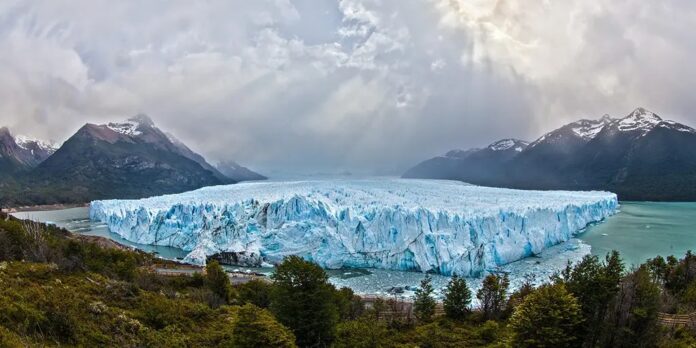By Vijay Jayaraj
In July, a bone-chilling cold wave swept across South America, plunging nations like Argentina, Chile, and Uruguay into an energy crisis that laid bare the fragility of their power systems. Record-low temperatures, driven by an Antarctic air mass, pushed electricity grids to the brink, forced governments to ration gas, and left thousands without power for over a day.
This brutal winter exposed a stark truth: South America’s energy infrastructure, strained by poverty and uneven development, cannot afford to gamble on unreliable sources like wind and solar. For nations striving to lift millions out of poverty by boosting economic growth, abundant oil and gas offer the only practical path to surviving harsh winters and securing a prosperous future.
Grip of Antarctic Cold
Snow blanketed Mar del Plata, Argentina, for the first time in 34 years, while the Atacama Desert, the world’s driest region, saw rare snowfall. Buenos Aires shivered at minus 1.9 degrees Celsius – the city’s coldest since 1991. Suburbs like El Palomar dropped to minus 7.4 degrees Celsius for the first time in decades. On June 30, Chile and Argentina ranked among the planet’s coldest spots outside polar regions.
The sudden, massive demand for electricity and heating fuel was entirely predictable for such weather. Yet, the system could not cope. Widespread power cuts rolled across the region, leaving thousands of households without electricity for more than 24 hours. Imagine the discomfort – even terror – of a family huddled together in freezing temperatures as the lights go out, unsure of when warmth and safety would return.
South America’s energy grids, particularly in Argentina, suffer from high transmission losses – up to 15-20% in some regions. Adding intermittent sources like wind and solar, which regularly falter under extreme weather, only compounds the problem. During the July crisis, solar panels were useless under snow and wind turbines struggled in erratic conditions.
In these moments, there is no wind turbine, no solar installation, no climate directive that could save the continent. It was fossil fuels – gas- and coal-fired generation and diesel heating units – that kept the lights on and the cold at bay. That’s the reality.
Studies show “most of the temperature-related mortality in Central and South American countries is caused by cold … generating annual economic losses of $2.1 billion.”
In Argentina, for instance, frigid temperatures claim a staggering number of lives – more than 60,000 annually, which is seven times the number attributed to heat. Chile tells a similar story, with 47,800 lost to cold compared to a mere 4,500 to heat. These figures provide an undeniable testament to a globally observed reality: Cold, not warmth, is humanity’s greatest climate-related killer.
Resist Opposition to Oil and Gas Development
The priority should be to generate massive amounts of cheap and reliable power. Fortunately, South America is sitting on a treasure chest of oil and gas resources.
Argentina’s Vaca Muerta shale formation holds more than 300 trillion cubic feet of recoverable gas and 16 billion barrels of recoverable oil and condensate resources. That’s more than enough to power for decades South America’s Southern Cone, a region below the Tropic of Capricorn that includes Argentina, Chile, and Uruguay. Adding to this energy bounty are Brazil’s and Guyana’s offshore fields.
Global energy analysts project that South America will be responsible for an astounding 80% of the growth in global oil production outside OPEC and the United States over the next five years. Even Brazil’s President, Lula da Silva, often portrayed as a champion of the climate movement, recently gave the green light to a controversial, but economically essential, drilling campaign in the Foz do Amazonas basin.
This kind of development holds the promise of energy independence, economic prosperity, and a permanent shield against the sort of crisis witnessed this July.
The antithesis of this is the Net Zero movement, which operates from the boardrooms of European banks and Ivy League campuses with no connection to the streets of Montevideo or the rural plains of La Pampa. The working families of South America need jobs, heating, food, and public transport more than abstract carbon metrics.
Any attempt to derail South America’s progress in the energy sector must be met with fierce opposition from policymakers and the public alike.
The Antarctic cold wave was a reminder of both nature’s unpredictability and the continent’s potential. With courage and clarity, the region can harness its oil and gas wealth to build a future where no one is left in the cold – literally or economically.
This commentary was first published by BizPacReview on August 7, 2025.
Vijay Jayaraj is a Science and Research Associate at the CO₂ Coalition, Fairfax, Virginia. He holds an M.S. in environmental sciences from the University of East Anglia and a postgraduate degree in energy management from Robert Gordon University, both in the U.K., and a bachelor’s in engineering from Anna University, India.
Related
Discover more from Watts Up With That?
Subscribe to get the latest posts sent to your email.



